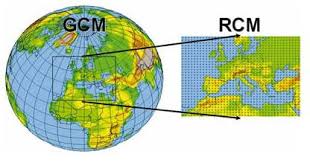Climate science
-

Occasionally I’ve been asked what is the difference between astronomical seasons and meteorological seasons. Deke Arndt of the National Centers for Environmental Information has a nice simple write-up that explains the difference at https://www.ncdc.noaa.gov/news/meteorological-versus-astronomical-seasons. EarthSky also has a good description of what the autumnal equinox is at https://earthsky.org/astronomy-essentials/everything-you-need-to-know-september-equinox.
-

September 23 marks the autumnal equinox, which means the official start of astronomical fall (remember, climatological fall started on September 1). The official time of the equinox is 4:20 AM Eastern Daylight Time. EarthSky had an article this week discussing why day and night are not equal on the day of the equinox which you might find interesting.
-

Recently I posted a story about nuisance flooding and its projected increase for parts of the Atlantic coast due to El Niño as well as rising sea levels. Here is a good FAQ on what nuisance flooding is and why it is important (link).
-

In this blog I talk a lot about El Niño because it has the most significant impact of any climate cycle on the climate of the Southeast. You might be interested in the history of how El Niño was discovered and why it has the name it has. I read a great article by Julia Busiek in…
-

Cliff Mass of the University of Washington has a good discussion of how we take information from global climate models and make it more useful by feeding the information into regional climate models. While his blog post is focused on the Pacific Northwest, the same principles apply to other regions, including the Southeast. There are…
Posted in: Climate science -

The State Climate Office of North Carolina has a new blog post on the biggest hurricanes to hit their state. You can find it at https://climate.ncsu.edu/climateblog?id=153&h=5666e5c1.
-

How do we know what the climate was like centuries ago? Climatologists use “proxy data” to determine the past climates. Records like tree rings show changes from year to year in growth patterns that are related to the climate in which the rings form, and the scientists can combine this with other information to see…